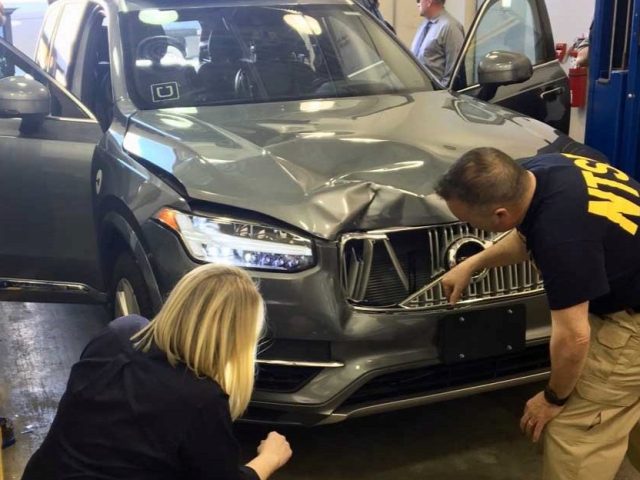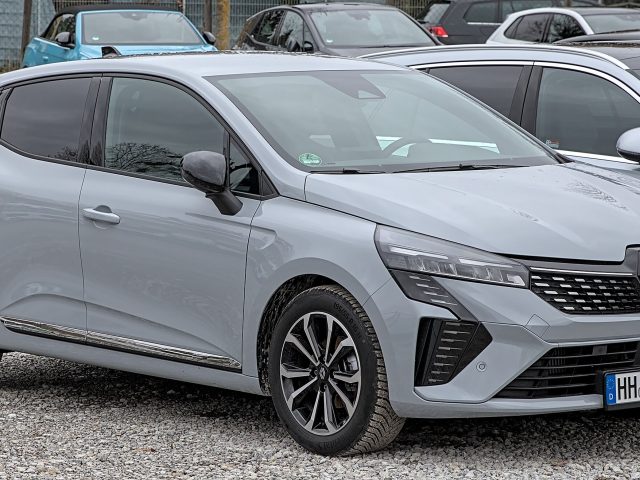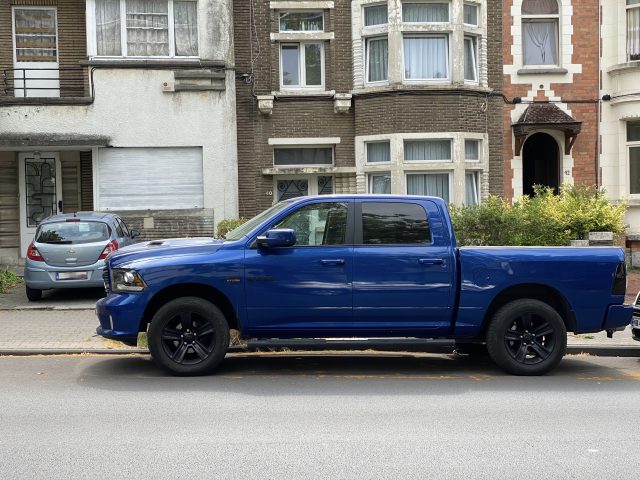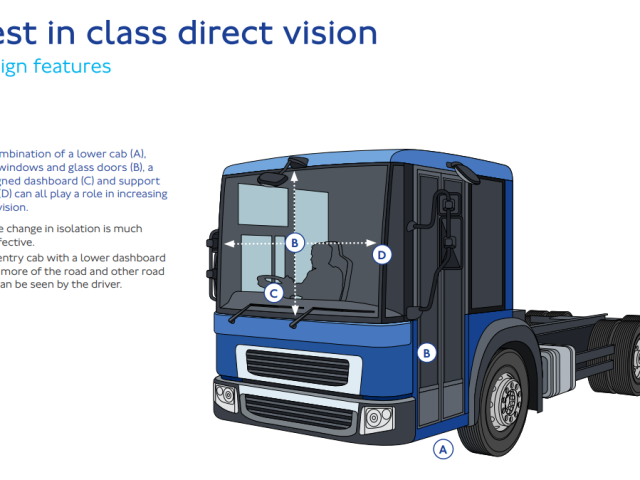Comparative Overview EU-US Vehicle Standards
The comparative table below sets out the EU’s vehicle safety standards that are not, or not yet, required in the US. (It is therefore not an exhaustive list comparing all mandatory vehicle regulations on safety systems/measures that apply in the EU and USA. Moreover, it does not list regulations/systems/measures that are mandatory in both jurisdictions, but which are either incompatible with each other (e.g. lighting or certain crash requirements) or where there are differences in stringency (e.g. rear underrun protection).)
Information on the table’s columns
The first column lists the vehicle safety system/measure. These have been divided into safety systems/measures that are mandatory for all M and N vehicle categories, for passenger cars and vans, and for trucks and buses. (Note: L category vehicles such as motorcycles are not covered). ‘Passenger cars and vans’ are usually referred to as light vehicles in the US, and ‘trucks and buses’ are referred to as heavy vehicles. Any difference in application to vehicle categories is mentioned in the EU or USA column.
The ‘European Union’ column lists the current legal basis that mandates the system/measure to be installed as well as the regulatory act setting out the respective technical requirements, followed by the first application date (which is not necessarily the application date in the current legal basis). Any application date prior to 2024 means the system/measure was already required by either the previous GSR (661/2009), the PSR (78/2009) or earlier acts. All EU dates refer to ‘all new vehicles’ sold/registered, to align with the US dates applying to new vehicles manufactured. The EU rules already apply for the approval of new vehicle types two years prior to the listed date, with exceptions to this rule explicitly mentioned. Hyperlinks for UN Regulations link to the text as published in the Official Journal instead of WP.29’s register of UN Regulations; although they may not be the latest version of that UN Regulation available at WP.29, they are the current version of that UN Regulation that is mandatory in the EU.
The ‘United States of America’ column contains references to a Federal Motor Vehicle Safety Standard (FMVSS), a Notice of Proposed Rule Making (NPRM), or an Advanced Notice of Proposed Rule Making (ANPRM), where available.
The EU and US apply two different regulatory models for allowing vehicles on the road. In the EU, the type approval system requires vehicles to be approved by authorities that verify compliance with the applicable standards, before they are allowed to be marketed. In the US, vehicle manufacturers self-certify that their vehicles comply with the applicable standards and can market them without approval from an authority.
All Vehicle Categories
| System | European Union | United States of America | Notes |
| Advanced Driver Distraction Warning (ADDW) Systems | General Safety Regulation (GSR; 2019/2144), through Delegated Regulation (EU) 2023/2590, as from July 2026. | None. | |
| Alcohol Interlock Installation Facilitation (AIIF) | GSR (2019/2144), through Delegated Regulation (EU) 2021/1243, since July 2024. | None. | |
| Assisted Driving Systems If fitted | GSR (2019/2144), through either UN Regulation 79 (UN R79; 04 series) for lane keeping (since 2017) or lane change assistance systems (since 2018), or UN R171 (Original Version) if systems that assist the driver in performing vehicle dynamic control are fitted, the latter since 2025. | None. | |
| Automated Driving Systems (ADS) If fitted | GSR (2019/2144), through Implementing Regulation (EU) 2022/1426 for three specific use cases for fully automated vehicles, and UN R157 (Original Version) for automated lane keeping systems (ALKS). | None. (NHTSA submitted a NPRM for a voluntary framework for the evaluation and oversight of motor vehicles equipped with an ADS, in January 2025). | Both the EU and the US are involved in, and are co-chairs of, WP.29’s informal working group on ADS. This is expected to result in a UN Regulation and a GTR that share the same performance requirements. |
| Driver Drowsiness and Attention Warning (DDAW) Systems | GSR (2019/2144), through Delegated Regulation (EU) 2021/1341, since July 2024. | None. | |
| Emergency Stop Signal | GSR (2019/2144), through UN R48 (07 series), since July 2024. | None. | |
| Intelligent Speed Assistance (ISA) | GSR (2019/2144), through Delegated Regulation (EU) 2021/1958, since July 2024. | None. |
Passenger Cars & Vans
| System | European Union | United States of America | Notes |
| Automated Emergency Braking Systems (AEBS) | GSR (2019/2144), through UN R152 (02 series). Vehicle-to-Vehicle since July 2024, Vehicle-to-pedestrian and vehicle-to-cyclist as from July 2026. | Not yet. FMVSS No 127 will be applicable for new vehicles as from 1 September 2029, pending a court case. | FMVSS No 127 is more stringent. |
| eCall | eCall Regulation (2015/758), through Delegated Regulation (EU) 2017/79, since March 2018. | None. | |
| Emergency Lane Keeping Systems (ELKS) | GSR (2019/2144), through Implementing Regulation (EU) 2021/646, since July 2024. | None. | |
| Frontal Protection Systems (E.g. ‘Bull Bars’) If installed | GSR (2019/2144), through Implementing Regulation (EU) 2021/535 (Annex XII), since May 2007. | None. | |
| Pedestrian Safety (Leg and Head Protection) | GSR (2019/2144), through UN R127 (04 series), introduced in a phased approach with the first phase applying for new type approvals as from December 2005. | None. (NHTSA submitted a NPRM to incorporate Global Technical Regulation (GTR) No 9 in September 2024). | |
| Rear Seatbelt Reminders | GSR (2019/2144), through UN R16 (07 series), since September 2021. | Not yet. As from September 2027, through a final rule amending FMVSS No 208. | Some relatively minor differences, see Table 10 of the final rule. |
Trucks & Buses
| System | European Union | United States of America | Notes |
| Automated Emergency Braking Systems (AEBS) | GSR (2019/2144), through UN R131 (01 series). Vehicle-to-Vehicle has been mandatory since 2015/2018 (depending on specific truck/bus category). | None. (NHTSA submitted a NPRM on AEBS for trucks and buses in July 2023.) | The 02 series of amendments to UN R131 introduced vehicle-to-pedestrian AEBS, however this is not yet mandatory in the EU. |
| Blind Spot Information Systems (BSIS) | GSR (2019/2144), through UN R151 (Original Version), since July 2024. | None. | |
| Direct Vision | GSR (2019/2144), through UN R167 (Original Version), as from January 2029. | None. | |
| Front Underrun Protection | GSR (2019/2144), through UN R93 (Original Version), since August 2003. | None. | |
| Lane Departure Warning (LDW) Systems | GSR (2019/2144), through UN R130 (Original Version), since November 2015. | None. | |
| Lateral Underrun Protection | GSR (2019/2144), through UN R73 (01 series), since 1991. | None. (NHTSA submitted an ANPRM on side underride guards for trailers and semitrailers in April 2023). | |
| Moving Off Information Systems (MOIS) | GSR (2019/2144), through UN R159 (Original Version), since July 2024. | None. | |
| Speed Limiters | GSR (2019/2144), through UN R89 (Original Version), since the 1990s for heavier trucks (N3) and buses (M3), and since the 2000s for lighter trucks (N2) and buses (M2). | None. (A NPRM on speed limiting devices for heavy vehicles was withdrawn on 24 July 2025). |








